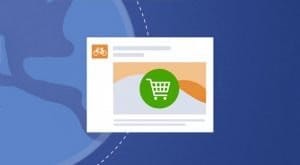 Written by ContentPowered.com
Written by ContentPowered.com
Affiliate marketing is one great way to make money online, and it relies entirely on ad views, clicks and eventual purchases. The process is simple; you, as an affiliate marketer, run an ad for a product. Customers see it, and depending on the affiliate program, you may get paid. Customers click it, and you’ll get paid. Customers buy the product and you get paid more. Different products and different networks pay different amounts for each level of referral; some don’t pay for impressions, some only pay on purchase, etc.
If you’re working as an ad affiliate, two things help you make more money. The first is a wider, larger audience. More viewers means more referral traffic, which means more money for you. The second is having a more targeted audience. Targeting people who are more likely to buy the product helps you increase your ad conversion rate, and thus the money you make.
Facebook gives you both of those. For audience size, Facebook simply can’t be beat. It’s pretty well impossible to access a larger audience in any one place. Of course, if you’re shouting to the wind in a crowd of people who don’t even begin to have interest in the product you’re selling, well, you aren’t going to get much out of it. That’s where Facebook’s deep targeting comes in. With a little legwork, you can target the types of people most likely to want your affiliate product and avoid wasting money on wide-target ads that do nothing for you.
Support Networks
Unfortunately, you can’t use Facebook alone for your affiliate marketing. You need to support Facebook ads with a Facebook page, and you need to support a Facebook page with a website. The website is where the meat of your affiliate marketing will take place.
Here’s the thing; web users today are incredibly sensitive about ads and aware of their status as a commodity themselves. If they have reason to believe that you’re using them for your own profit, they’ll tear you apart. You absolutely have to avoid that appearance, which means maintaining a careful ratio of valuable content to advertising.
Both your website and your Facebook page should rely on value to attract users and keep them around. This value comes in informative articles, primarily. How you approach this is up to you. You can use your affiliates to determine what you write about, or you can use your passions and leverage them with affiliates. Either method is viable.
Test, Test, and Test Some More
Test everything. Test it repeatedly. Never stop testing. A Facebook ad has four components:
- Targeting.
- Headline.
- Image.
- Description.
All four of these need to be systematically tested and improved over time.
Targeting is easy to test but hard to measure. You have to determine how to compare showing an ad to an audience of 100,000 versus an audience of 1,000,000. How much of the increased conversion rate you receive comes from the size of the audience, and how much from the targeting? Calculate your click-through rate and your return on investment; after all, appealing to a larger audience costs more. Always be working towards refining an audience for every ad.
The headline, image and description are somewhat easier to test. Create two identical ads and change one thing. Tweak the wording of the headline slightly. Tweak the wording of the description, or write a new description entirely. Put a border on the image, or reverse it, or change the colors, or change it entirely. Run both versions of the ad consistently with the same targeting for the same amount of time. Measure the click-through and conversion rates of every variation. Pick the one with the highest rates at the end of your testing period, invest more in it, and create more variations to continue testing.
Unless you’re going all-in on one product, you may have a rotating selection of products to advertise. You’re going to have to keep a separate process for each product, because different people like different products and have different preferences in advertising.
Ignore Impressions
It costs less than a dollar to earn 1,000 views of your ad on Facebook. Unfortunately for affiliate marketers, CPM ads – the ones that pay out per thousand views – pay you less than the cost of running that kind of ad on Facebook. The fact is, views are largely worthless. What you need to do is rely on CPC – the affiliate ads that pay per click – and do everything you can on Facebook to bolster your click rate.
A lot of what you can do to boost your sales is covered in the support networks section; make a website, make a blog, make a Facebook page and keep them all up to date. You can also do this with a Facebook group. The idea is to present yourself as an authority in the broad topic that your product is part of.
For example, if someone wants to sell vitamins, it’s a good idea to run a website and suite of Facebook resources for nutrition and dieting information. This is, of course, a very competitive niche, with some high-profile competitors even having their own TV shows. The point is to become an authority, even if that authority isn’t based on actual science or schooling. Once people think of you as an authority, they won’t whine or react badly to a few advertising posts. Those posts will also have a higher click rate; after all, if you’re an authority and you’re recommending the product, it must be good.
Expand Beyond Affiliates
One of the best parts about running an affiliate blog this way is the potential for expansion. Think about it this way; you’re doing a lot of work to attract and retain an audience, for the purposes of sending traffic to a shop you don’t own. When the user buys a product worth $10, you get a tiny payout. Why not undercut the affiliate and start selling a similar product yourself? Instead of that tiny payment, you bring in the full $10.
The tricky part is finding a product you can successfully sell. Nutrition is a bad example; there’s a lot of overhead associated with producing, storing, selling and shipping vitamins and nutritional supplies. You could, however, invest in some kind of nutrition tracking software. Software is a great option; a good app may only pull in $2 for a conversion, but that’s more than you’d get from a conversion through your affiliates. Plus, if your software doesn’t compete, you can keep up the affiliate networks and get the best of both worlds.





